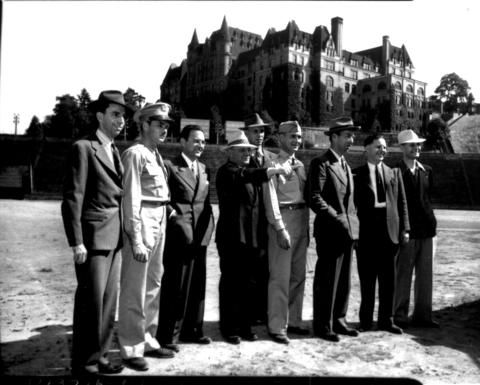Identity elements
Reference code
Name and location of repository
Level of description
Item
Title
D13216-1
Date(s)
- 1942-08-04 (Creation)
Extent
Name of creator
Content and structure elements
Scope and content
Army officers, city officials, and Mayor Harry P. Cain planning bomb show at Stadium Bowl. Mayor Cain is standing third from right. Stadium High School is in the background. City officials joined Army personnel on August 4, 1942, in planning a practical demonstration of how civilians might protect themselves against incendiary bombs if dropped in enemy air raids. Temporary buildings, including seven "homes" and a three-story "hotel," would be constructed in Stadium Bowl on which bombs would be deliberately set off. Techniques to put out bombs would include stream and spray methods, "dunking in bathtubs," and what to do when the bombs burn themselves out. The demonstration would draw some 10,000 spectators on the evening of August 19th. On Stadium's field are: Elmer Bashey of Public Works, Lt. Jack Barrows, City health director Dr. Lee (Leland E.) Powers, local CD coordinator Frank Evans, Public utilities first aid expert Theodore O. Powers, Mayor Cain, Chief air warden Fred Sandstrom and Capt. Charles Eisenbacher of the Tacoma Fire Department. (T.Times 8-5-42, p. 2; TNT 8-19-42, p. 1, TNT 8-20-42, p. 1-articles on bomb demonstration)
Mayors--Tacoma--1940-1950; Cain, Harry P., 1906-1979; Stadium Bowl (Tacoma); Stadium High School (Tacoma); Bashey, Elmer; Barrows, Jack; Powers, Leland E.; Evans, Frank; Powers, Theodore O.; Sandstrom, Fred; Eisenbacher, Charles J.;

